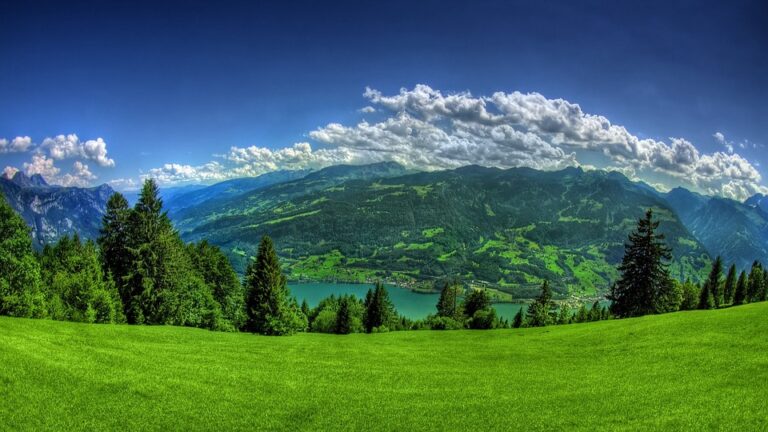Drought Dilemma: Tackling Water Scarcity in a Changing Climate
As the global climate continues to shift in unpredictable and often harsh ways, the issue of water scarcity is becoming more acute. From the drying reservoirs of California to the parched landscapes of Sub-Saharan Africa, the struggle for water reflects a deeper crisis with potentially devastating consequences. This article delves into the multifaceted problem of water scarcity, underscored by the looming dread of prolonged drought conditions across the globe.
Understanding the Scope of the Problem
Drought refers to prolonged periods of insufficient rainfall that lead to water shortages, ultimately affecting agricultural, urban, and environmental water supplies. The causative factors are multi-faceted, spanning from natural climate variability to human-induced climate change. Data from the National Oceanic and Atmospheric Administration (NOAA) indicates that drought frequency and intensity are increasing in many parts of the globe, exacerbated by rising global temperatures.
The impacts of drought are far-reaching. Agricultural losses translate to economic deficits, food insecurity, and livelihood destabilization. For example, the 2012 drought in the United States led to an estimated $30 billion in agricultural losses (source: U.S. Department of Agriculture). Urban areas face water rationing, and ecosystems suffer as natural water reserves dwindle, threatening biodiversity. In Sub-Saharan Africa, prolonged drought has led to severe hunger crises, affecting millions and leading to significant economic and social instability.
The Role of Climate Change
Climate change intensifies the drought dilemma through several mechanisms. Higher global temperatures lead to increased evaporation rates and altered precipitation patterns. According to the Intergovernmental Panel on Climate Change (IPCC), climate models predict that regions like the Mediterranean, Southern Africa, and parts of the Americas will experience more frequent and severe droughts in the future.
This trend poses a significant risk to the 2 billion people globally who live in water-stressed regions (source: United Nations). Furthermore, glacier and snowpack reductions in mountain regions, which are vital natural reservoirs, contribute to decreasing water availability in downstream areas. Rivers such as the Indus, Ganges, and Colorado, crucial for drinking water and agriculture, are already witnessing reduced flow rates due to diminishing glacial sources.
Innovative Solutions for a Parched Planet
Addressing water scarcity in our changing climate demands a multifaceted approach incorporating technology, policy, and community engagement. Here are some effective strategies:
-
Water Conservation and Efficient Use:
Implementing water-saving technologies and practices can significantly reduce demand. For agriculture, the largest consumer of water, transitions to drip irrigation and other efficient systems can conserve vast amounts. Urban areas can benefit from tiered water pricing, promoting reduced consumption, and the integration of water-efficient appliances and fixtures. -
Rainwater Harvesting and Groundwater Recharge:
Both traditional and modern techniques can help communities capture and store rainwater. For example, in India, traditional tankas (underground reservoirs) have been revived to collect monsoon rains. Recharging aquifers through sustainable groundwater management practices is essential to restoring depleted reserves. -
Infrastructure Improvements:
Upgrading aging and inefficient water infrastructure can mitigate losses from leaks and inefficiencies. The American Society of Civil Engineers estimates that the U.S. loses about 6 billion gallons of treated water daily due to aging infrastructure. Investment in new technologies such as smart water grids can enhance distribution efficiency and reduce waste. -
Policy and Governance:
Robust water management policies and governance frameworks are critical. Nations need to adopt integrated water resources management (IWRM) practices, which consider all sources of water and the needs of various users. Cross-sectoral cooperation and transboundary water agreements can also foster peace and collaboration between nations sharing water resources, as seen in the success of the Mekong River Agreement among Southeast Asian countries. -
Desalination:
Although energy-intensive and costly, desalination offers a reliable means of supplementing freshwater supplies in coastal regions. Saudi Arabia has implemented the world’s largest desalination capacity, meeting 50% of the nation’s drinking water needs through this technology (source: Saudi Arabia Ministry of Environment, Water, and Agriculture). Innovations in renewable energy can help reduce the environmental footprint of these processes. - Public Awareness and Community Engagement:
Engaging communities in water conservation efforts and educating the public about the reality of water scarcity are crucial. Localized strategies, tailored to socioeconomic and cultural contexts, can optimize the effectiveness of conservation initiatives.
Case Studies of Success
Israel is heralded as a world leader in water efficiency, using cutting-edge technologies and policies to transform its arid landscape into a water-secure nation. Through widespread use of desalination and recycling wastewater, Israel meets a substantial portion of its water needs independently.
Similarly, in India, the state of Gujarat has seen remarkable success with the Sardar Patel Participatory Water Conservation program. By empowering local communities to participate in water conservation and management, agricultural productivity has increased, and water tables have risen, demonstrating the power of grassroots engagement.
Conclusion
As our planet warms, the drought dilemma will inevitably intensify, making proactive and innovative solutions all the more essential. Tackling water scarcity in a changing climate requires collective effort from individuals, communities, nations, and the global community. By adopting sustainable practices, investing in technology, and fostering cooperative governance, the seemingly Sisyphean task of overcoming water scarcity can be achieved, ensuring water security for future generations.
For more information on tackling water scarcity and participating in conservation initiatives, visit reputable resources like UN Water and World Resources Institute for the latest data and practical advice.
